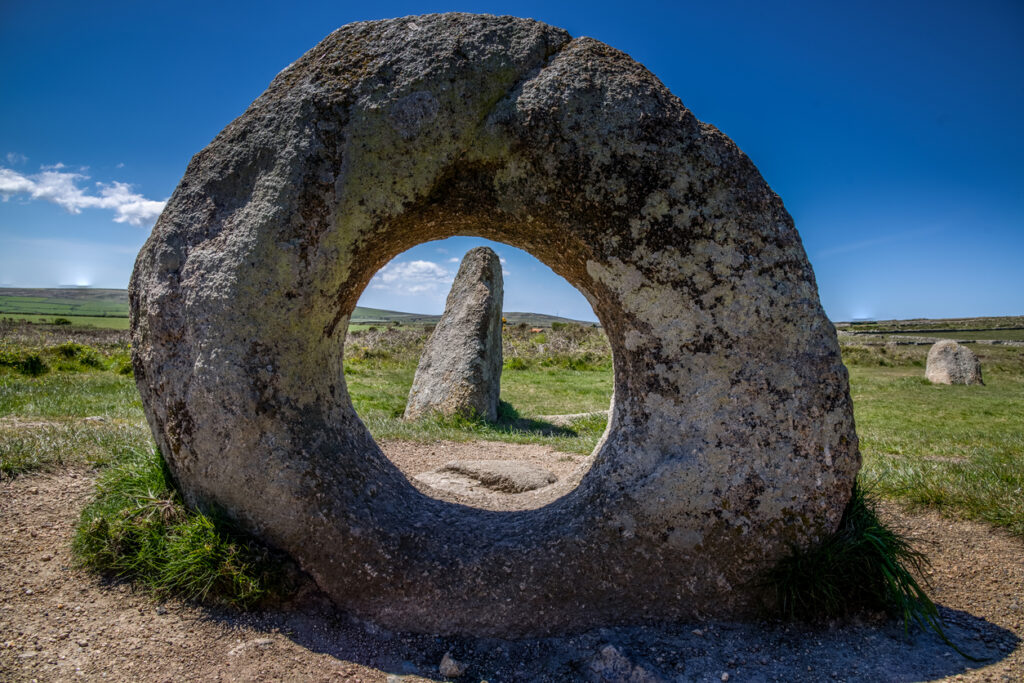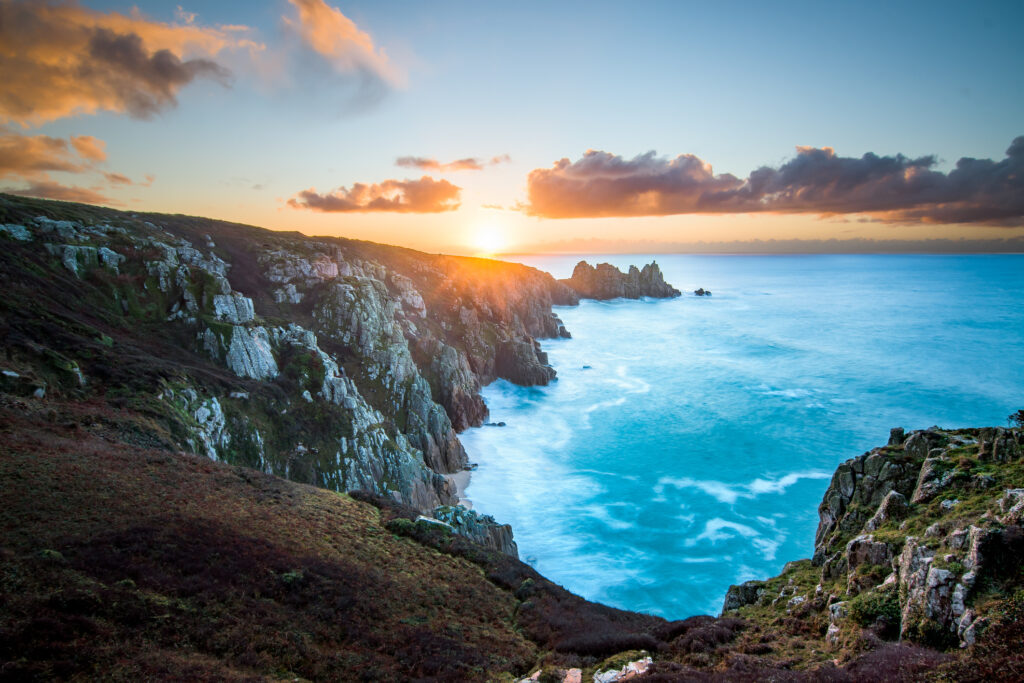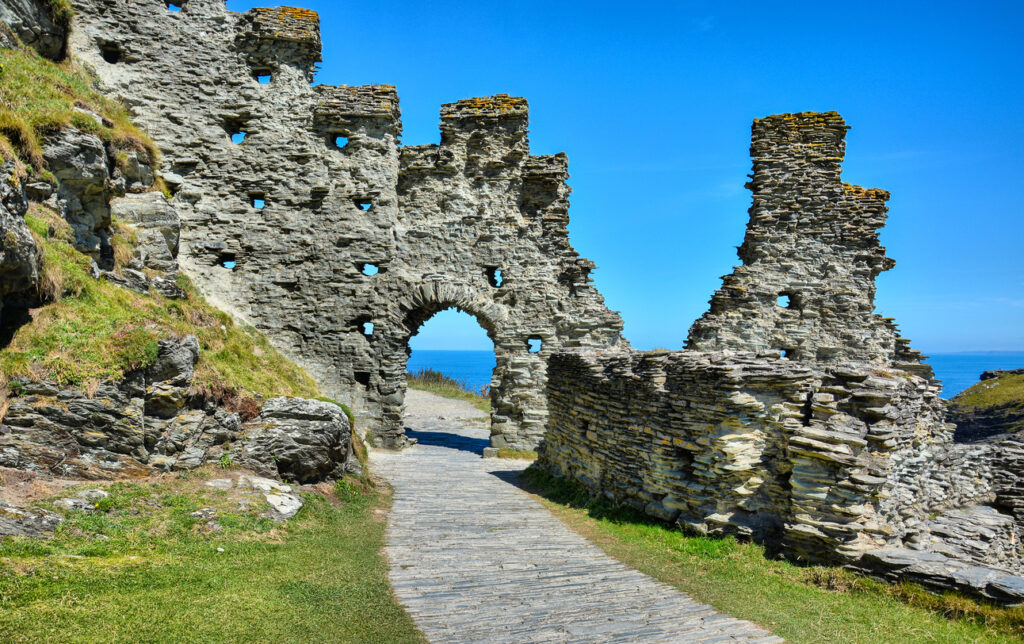England is a land steeped in a colourful and fascinating past, but the county of Cornwall holds a unique and particularly significant place. With its own strong identity and rich heritage, this area stands apart from the rest of the country. If you’re planning a trip to the coast, understanding a little about what makes this county so special will only enhance your visit.
Cornwall is often seen as distinct from the rest of England, largely thanks to its unique Celtic heritage that has profoundly influenced its culture and atmosphere. We’re incredibly proud of the area’s rich story, and here at Blue Reef Aquarium Newquay, we’re equally committed to playing our part in preserving the area’s natural heritage and educating visitors about the incredible local marine life.
What makes Cornwall so unique?
When you arrive in Cornwall, you’ll immediately feel that unique atmosphere, almost as if you’ve stepped into a separate land. This feeling isn’t just a seaside illusion; it’s rooted in history. Cornwall’s identity is wonderfully distinct, celebrated through traditions, food, and stunning natural landmarks.
Think of the perfect, hearty Cornish pasties and the essential cream tea, or the legends of an almost forgotten time, like King Arthur and his Knights of the Round Table. All this is set against the backdrop of one of the most incredible coastlines in the world, with beaches that truly take your breath away.
To fully appreciate the county, here are 10 historical facts that every visitor should know. You might even be able to impress a local or two with these facts!
Inhabitants of Cornwall date back to Mesolithic Times
The history of humans in Cornwall is an ancient one, with evidence of inhabitants dating back to the Mesolithic period, the Middle Stone Age, approximately 10,000 BC.
Archaeological finds on Bodmin Moor, such as flint tools and scatters, show that hunter-gatherers were visiting and using the resources of the area millennia ago.

Cornwall used to be part of the Kingdom of Dumnonia
Long before the modern map of England was drawn, Cornwall was part of the vast Kingdom of Dumnonia. This Celtic tribe, known as the Dumnonii, formed their kingdom between the 4th and 8th centuries. It was a Brittonic realm that covered most of modern-day Devon and Cornwall. Over time and following conflicts, Cornwall became a more formal part of the Kingdom of England in the tenth century.
Cornwall has its own recognised language
A throwback to Dumnoinia, Cornwall has its own language, known as Kernewek. It’s a revitalised Celtic language that is officially recognised, much like the Welsh and Scottish Gaelic languages. While you’ll hear English everywhere, you might notice signs and local names in Cornish. Why not try a few phrases? ‘Good day’ is ‘Dydh da’ and ‘thank you’ is ‘meur ras’.
Cornwall has its own flag
While you’re in Cornwall, look out for the distinctive Cornish flag. Known as the St Piran’s Flag, it features a white cross on a black background. St Piran is the patron saint of Cornwall, and the flag is said to represent the white tin coming from the dark ore, a nod to the county’s mining history.
Cornwall was a significant contributor to tin and copper mining
Speaking of mining history, Cornwall’s mining heritage is world-renowned and dates back as far as the Bronze Age. The county’s rich deposits of tin and copper meant that in the 18th and 19th centuries, Cornwall was the world’s leading producer of these vital minerals. The landscape is still scattered with the iconic ruins of engine houses, a reminder of the ingenuity and hard work of Cornish miners.
Cornwall is a Duchy
Cornwall holds the unique status of being a Duchy, a dukedom, one of only two in the United Kingdom. It was created in 1337 to provide an independent income for the eldest living son of the monarch. This tradition continues today, and the Duchy is currently managed by Prince William, the Duke of Cornwall.
The coastline is the longest in the UK
With the vast Atlantic Ocean and the English Channel surrounding it on three sides, Cornwall boasts the longest coastline of any county in the UK. This spectacular coastline is a dream for walkers, hosting the majority of the South West Coast Path, offering countless opportunities to explore hidden coves, dramatic cliffs, and sweeping sandy beaches.

The area was a hub for smuggling and piracy
The rugged coastline and numerous secluded coves that make Cornwall so beautiful today also made it an ideal location for a less reputable side of history, smuggling and piracy. Throughout the 16th to 18th centuries, tales of ‘free traders’ moving illicit goods like brandy and tea, and ‘wreckers’ luring ships onto the rocks, were common along this stretch of coast.
Cornwall is the surfing capital of the UK
While its history of trade and mining is ancient, Cornwall also holds a modern claim to fame as the UK’s surfing capital. The Atlantic swell consistently delivers excellent waves, particularly to beaches like Fistral in Newquay, attracting surfers from all over the world. This culture adds a vibrant, contemporary layer to the area’s history.
Cornwall’s landscape inspired the world’s first steam road carriage
The innovations driven by the mining industry led to significant engineering breakthroughs. Richard Trevithick, a Cornish engineer, is famously credited with inventing the world’s first working steam road carriage at the very beginning of the 19th century, an invention directly linked to the need for efficient machinery in the local mines.
Learn more about Cornwall by visiting
A journey through Cornwall is a journey through time, all the way from the Stone Age to the modern day. To truly immerse yourself in the area’s captivating history, we recommend visiting a few key places:
Tintagel Castle
Steeped in the legends of King Arthur, the castle ruins on the dramatic north coast are an unmissable link to ancient British folklore. Managed by English Heritage, you can cross the spectacular new footbridge to explore the rugged island and admire the statue of Gallos, inspired by the Arthurian tales. When the tide permits, visitors can also explore the sandy beach and Merlin’s Cave below.

St Michael’s Mount
An iconic tidal island crowned by a medieval castle and church, St Michael’s Mount offers a breathtaking glimpse into Cornwall’s religious and military past. The island is accessible from the mainland village of Marazion either by a cobbled causeway at low tide or by ferry boat when the tide is high, making it a truly unique experience.
Bodmin Moor
The wild, beautiful moorland is central to Cornwall’s ancient past, holding evidence of Mesolithic life, dotted with stone circles, ancient burial mounds, and the remains of old mining communities. It’s an Area of Outstanding Natural Beauty, perfect for walking routes like the Copper Trail, allowing you to connect directly with the land that has hosted human history for millennia.
Geevor Tin Mine Museum
Geevor Tin Museum is a fantastic, immersive experience that allows you to explore the real remnants of the tin mining industry. This UNESCO World Heritage Site is one of the largest preserved mining sites in the UK, offering visitors the chance to go underground into the 18th-century Wheal Mexico mine, pan for ‘gold’ and gems, and walk through the atmospheric Engine House and ‘The Dry’ changing rooms.
While you’re visiting this historic county, why not pay a visit to Blue Reef Aquarium Newquay? In this blog, you’ve learnt a bit about the human history of Cornwall, but you can also explore the natural history of its surrounding waters.
Rain or shine, our exhibits proudly showcase Cornwall’s own native marine animals, offering a fantastic window into the wildlife that thrives just off the coast, as well as the chance to learn about fascinating creatures from around the country and the world.
A trip to Cornwall is an opportunity to enjoy stunning natural beauty and to connect with a history that is distinctly British, and yet uniquely Cornish. We look forward to welcoming you and as you explore this remarkable corner of the world.
